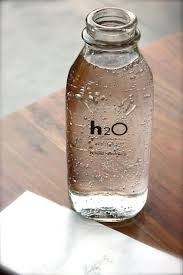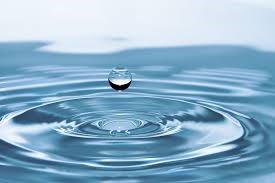Brief About Filters Present In RO Water Purifier System
With more than one lakh people in India dying of water-borne diseases, it has become important to ensure that you have access to safe and clean drinking water. Gone are the days when boiling water was enough to make it suitable for drinking. Environmental degradation and growing population have resulted in an increase in water contamination and pollution making it essential to purify the water before consumption. This is where an efficient water purifier system comes into the picture. A water purifier not only removes excess salts, minerals, suspended materials, and microbes but also retains the essential vitamins and minerals.
Types of Filters In RO System
These water purifier systems use different types of filters for purification purposes. You would find that filters like RO, UV, activated carbon and UF are added, which works in an efficient way to purify the raw water and make it pure and safe for drinking. Let us discuss the different types of filters present in water purifiers, and comprehend their functionalities
1. RO filters
If you live in an area where the water has a high amount of dissolved minerals, you need to opt for an RO water purifier. Reverse Osmosis (RO) filters use a multi-stage filtration process to purify water. The filters use a combination of active carbon particle filtration processes to remove the impurities. The filters have a membrane with very small pores that helps in removing micro-organisms. RO filters also help in improving the taste of the water that you drink.
2. Activated Carbon Filter
The activated carbon filter is ideal for removing soluble gases such as chlorine, ammonia, carbon monoxide, and ammonia. The water purifier also helps in filtering organic matters such as leaves or algae. The activated carbon filters are porous that easily absorb chlorine and pollutants such as pesticides. The residential carbon filters also have a lining of activated silver that helps in killing bacteria. Activated carbon filter-based water purifiers are, however, not recommended for areas that receive water with high TDS.
3. UV Filters or e-boiling
As the name suggests, these water filters use ultra-violet light to kill germs, bacteria, cysts, and microbes present in water by attacking their DNA cells. The simple and effective process can remove almost 99 percent of the harmful organisms present in water. The filters have a small mercury lamp that produces short wave UV radiation. These radiations penetrate the cells of the viruses and bacteria, thereby destroying the ability to reproduce. The purification method only kills the germs. You need a separate filter to physically remove the germs. UV filters are ideal for purifying water that is biologically unsafe to drink.
4. UF Filters
UF filters have membranes that are similar to the RO membranes but with larger pores. The membranes in the UF filter help in removing pathogenic organisms and colloidal particles. UF filters, however, don’t remove dissolved salts and solids from the water. UF filters are ideal for purifying soft water with less TDS. In short, UF filters are ideal for the pre/post-filtration process.

Essential Points to Consider
The essential pointers will help you select the right RO water purifier system that is ideal for you.
- Check the water quality before purchasing a water purifier
- Storage Capacity: You need to check the storage capacity of the purifier before purchasing
- Find out about the different purification stages. More stages of water purification ensure the availability of cleaner water.
- Check the purification technique as each method has some limitations when it comes to eliminating impurities
- Check the total quantity of water it can purify to ensure that it meets your requirements
- Check the certifications to ensure that the product has been tested and meets all the quality standards
Last Few Words
There are a large number of RO water purifier systems that use different purification methods and filters to make water safe for drinking. A majority of the water purifier systems use a combination of different filters to make water safe for drinking. Though the water purifiers that use a combination of filtration processes may be expensive, it is worth the expenditure considering the health benefits and safety that these purifiers offer.






Cool blog! Is your theme custom made or did you download it
from somewhere? A theme like yours with a few
simple tweeks would really make my blog shine. Please let me know where you got
your design. Many thanks
Dear Sir/Madam,
Thank you, for your kind appreciation. Keep reading KENT Blog for more motivation on staying healthy!
Regards,
Team Kent
Great article, exactly what I was looking for.
Dear Sir/Madam,
Thank you, for your kind appreciation. Keep reading KENT Blog for more motivation on staying healthy!
Regards,
Team Kent
After checking out a handful of the articles on your web site, I really like your way of writing a blog.
I added it to my bookmark site list and will be checking back in the near future.
Please visit my web site as well and tell me how you feel.
Howdy! This is my 1st comment here so I just wanted to give a quick shout out
and say I truly enjoy reading your articles. Can you suggest any other blogs/websites/forums
that cover the same topics? Thanks for your time!
Hi,
Thank you, for your kind appreciation. Keep reading KENT Blog for more motivation on staying healthy!
Regards,
Team Kent
Hello There. I discovered your weblog the use of msn. This is a
very smartly written article. I’ll be sure to bookmark it and return to read extra of your useful information. Thank you for the post.
I will certainly return.
Hi,
Thank you, for your kind appreciation. Keep reading KENT Blog for more motivation on staying healthy!
Regards,
Kent Team
This is a topic that’s near to my heart… Best wishes!
Where are your contact details though?
Hi,
Thank you for your appreciation. Regarding your query, we would inform you that the contact details of our sales helpline number is 9582123456. Let us know if you require any further assistance.
Regards,
Kent Team